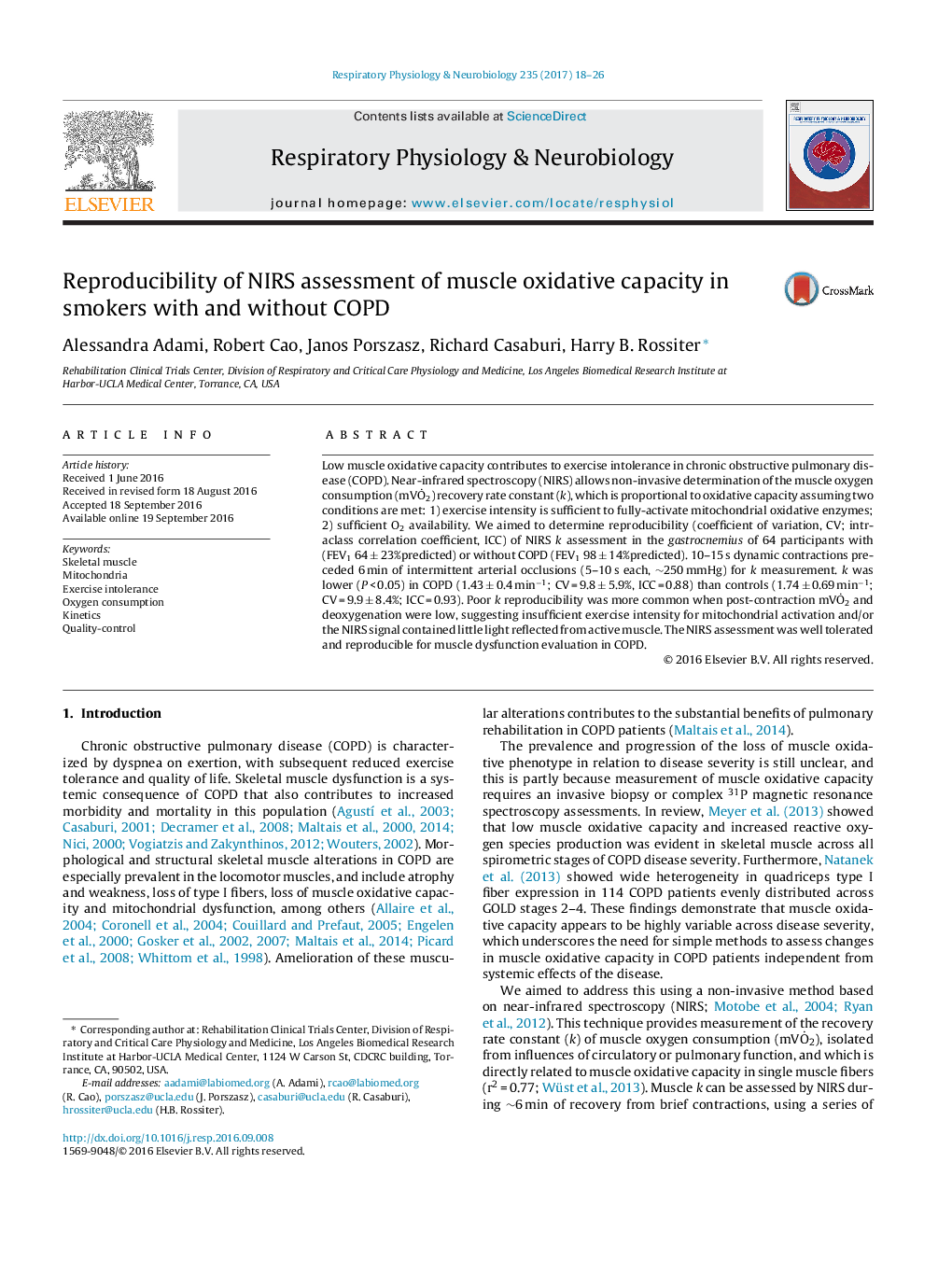| Article ID | Journal | Published Year | Pages | File Type |
|---|---|---|---|---|
| 5594225 | Respiratory Physiology & Neurobiology | 2017 | 9 Pages |
Abstract
Low muscle oxidative capacity contributes to exercise intolerance in chronic obstructive pulmonary disease (COPD). Near-infrared spectroscopy (NIRS) allows non-invasive determination of the muscle oxygen consumption (mVÌO2) recovery rate constant (k), which is proportional to oxidative capacity assuming two conditions are met: 1) exercise intensity is sufficient to fully-activate mitochondrial oxidative enzymes; 2) sufficient O2 availability. We aimed to determine reproducibility (coefficient of variation, CV; intraclass correlation coefficient, ICC) of NIRS k assessment in the gastrocnemius of 64 participants with (FEV1 64 ± 23%predicted) or without COPD (FEV1 98 ± 14%predicted). 10-15 s dynamic contractions preceded 6 min of intermittent arterial occlusions (5-10 s each, â¼250 mmHg) for k measurement. k was lower (P < 0.05) in COPD (1.43 ± 0.4 minâ1; CV = 9.8 ± 5.9%, ICC = 0.88) than controls (1.74 ± 0.69 minâ1; CV = 9.9 ± 8.4%; ICC = 0.93). Poor k reproducibility was more common when post-contraction mVÌO2 and deoxygenation were low, suggesting insufficient exercise intensity for mitochondrial activation and/or the NIRS signal contained little light reflected from active muscle. The NIRS assessment was well tolerated and reproducible for muscle dysfunction evaluation in COPD.
Related Topics
Life Sciences
Biochemistry, Genetics and Molecular Biology
Physiology
Authors
Alessandra Adami, Robert Cao, Janos Porszasz, Richard Casaburi, Harry B. Rossiter,
